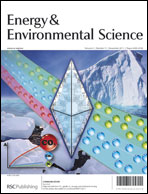Understanding the ecological relationships of the microbiota in bioelectrochemical systems (BESs) is necessary to gain deeper insight into their performance. Here, we show that the fermentation product 2,3-butanediol stimulates mutually beneficial interactions between Pseudomonas aeruginosaPA14 and Enterobacter aerogenes in a BES with glucose as the initial substrate under microaerobic conditions. The experiments were conducted in potentiostatically poised 3-electrode reactors. Under these conditions: (i) the current density by a co-culture of P. aeruginosa and E. aerogenes increased at least 14-fold compared to the current density by either of these two bacteria alone; and (ii) E. aerogenes fermented glucose principally to 2,3-butanediol, which was subsequently consumed by P. aeruginosa. To determine the benefits to each microorganism in this symbiosis, we conducted experiments with pure cultures. The current production by a pure culture of P. aeruginosa with 2,3-butanediol was increased 2-fold compared with glucose as the carbon source. This was due to enhanced phenazine production by P. aeruginosa. Further, pyocyanin comprised the majority (92%) of the phenazines produced by P. aeruginosa with 2,3-butanediol, but only 29% with glucose. The current production by a pure culture of E. aerogenes increased ∼19-fold when the growth medium was supplemented with 35 µg ml−1 of pyocyanin as the electron mediator. We also observed that E. aerogenes generated maximum current densities with pyocyanin compared to the other three phenazines, indicating that E. aerogenes respires most effectively with pyocyanin—the phenazine which production is stimulated by this microbe's product (2,3-butanediol). Concomitantly, a decrease in fermentation products and enhanced growth with increasing concentrations of pyocyanin implies a shift towards electrode-based respiration by E. aerogenes rather than fermentation. Therefore, the synergism in current generation by the co-culture can be attributed to the combination of enhanced pyocyanin production by P. aeruginosa with 2,3-butanediol and the ability of E. aerogenes to efficiently respire. This study is the first to demonstrate metabolite based “inter-species communication” in BESs, resulting in enhanced electrochemical activity. It also explains how an inconsequential fermenter can become an important electrode-respiring bacterium within an ecological network at the anode.

You have access to this article
 Please wait while we load your content...
Something went wrong. Try again?
Please wait while we load your content...
Something went wrong. Try again?


 Please wait while we load your content...
Please wait while we load your content...